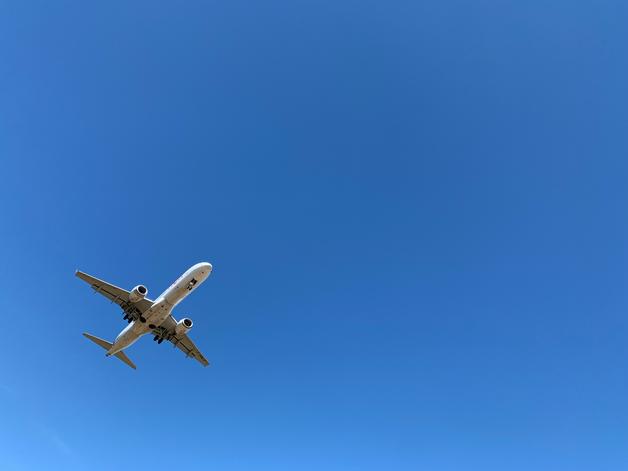Considering flying while pregnant? Questions dart through the mind—Should I go? Is my baby safe at 35,000 feet? What if I suddenly feel unwell mid-air, or the airline refuses to let me board at the last minute? When pregnancy comes with its share of unpredictability, adding travel to the mix can feel like embarking on uncertain skies. From medical documents, airline policies, phases of pregnancy, and even pressing concerns about “cabin pressure” or “scan safety”—the maze can seem endless. Yet, with the right blend of clinical advice and simple solutions, flying while pregnant transforms into an achievable, even pleasant, experience. Let’s unwind the medical facts, confront the hidden worries, and detail what every expectant parent should know, from the safest trimesters to coping with jetlag and dehydration, ensuring both you and your baby soar with confidence.
Is Air Travel Safe During Pregnancy?
You might be sitting there, wondering, “Is flying while pregnant truly safe?” Modern medical evidence strongly supports the idea: For most women enjoying an uncomplicated pregnancy, especially in the second trimester, air travel is not only permissible but generally well tolerated. Why second trimester? Between 14 and 27 weeks, the fetus is securely implanted, morning sickness often fades, and the risk of sudden pregnancy complications, like preterm labour, is significantly lower.
Of course, the story isn’t identical for everyone. Your obstetrician weighs up factors like previous preterm delivery, placenta previa (when the placenta covers the cervix), a cervix shorter than normal (cervical insufficiency), existing hypertension, gestational diabetes, recent bleeding, and personal or family thrombotic disorders. Even with robust evidence supporting safety, tailor-made advice from your healthcare provider is indispensable—after all, no two pregnancies are identical.
Navigating Airline Policies and Documentation Essentials
Is there anything more nerve-wracking than reaching the airport, only to be questioned by staff about your due date or handed extra paperwork? Most airlines have a clear stance: For single pregnancies, flying while pregnant is usually allowed until 36 weeks; for twins or higher-order multiples, the cutoff is often 32 weeks. Crossing the 28-week mark? Prepare to furnish a medical certificate confirming your due date and fitness to fly, sometimes in a format unique to each carrier.
For international journeys, expect even stricter demands—think insurance that covers pregnancy-related complications and proof of prenatal care. Always keep these essentials in your hand luggage:
- Up-to-date prenatal records (latest ultrasounds, lab results, blood group card)
- Recent doctor’s certificate or fitness to fly note
- Emergency contacts and insurance papers
The last thing anyone wants is a hiccup at check-in or during stopovers.
Perfect Timing: When Is It Best to Fly?
Why does timing matter? The human body, during pregnancy, undergoes physiological changes—an expanding belly, shifting blood volume, ligament laxity—which not only affect comfort but can heighten medical risks.
- First Trimester (up to 12 weeks): Not contraindicated, but fatigue, nausea, and unpredictable symptoms often make flying while pregnant less attractive here. Clinicians agree—air travel does not cause miscarriage, but morning sickness and exhaustion might turn a short flight into a new form of endurance test.
- Second Trimester (13–27 weeks): Ideal. Energy rebounds, nausea wanes. Your uterus isn’t yet so large as to make sitting for hours unbearable. Scientifically, both mother and baby are thought to face the least risk.
- Third Trimester (28–36 weeks): Now, most airlines insist on documentation. A growing bump plus natural increases in blood clots and swelling make late-pregnancy flights uncomfortable, though not impossible if medical guidance is followed.
Medical Risks and In-Flight Precautions
“Will my baby get enough oxygen? Could flying while pregnant cause unexpected bleeding?” These worries are real, but scientific data is reassuring.
Preventing Deep Vein Thrombosis (DVT)
Blood in pregnancy becomes more prone to clot—an evolutionary shield against heavy bleeding, but also a risk on long-haul journeys. Prolonged immobility (think: stuck in a middle seat between two snoring strangers) slows venous return, increasing the risk of deep vein thrombosis. Combat this by:
- Wearing compression stockings (these boost circulation in the legs)
- Standing, stretching, or short walks around the cabin at least every 1–2 hours
- Performing ankle circles and calf raises
- Staying hydrated (watch out—caffeinated drinks and sodas amplify dehydration effects).
Cabin Environment & Comfort
Cabin air, arid and pressurized, may intensify fatigue or headaches. Even healthy pregnancies can get dry nasal passages or mild swelling. Carrying a small bottle for regular sips, saline nasal sprays, and a nourishing snack keeps your body hydrated and blood glucose steady.
When flying while pregnant, the seatbelt must rest low, across the hips—never directly over the bump. Loose, layered clothing provides the flexibility to adapt to shifting temperatures, while an aisle seat delivers immediate bathroom access (ever noticed how much more you need the toilet now?).
Administrative and Medical Readiness
Carry your prenatal documentation close. Digital copies may help, but physical documents guarantee swift responses in case of emergencies—missed connections, sudden symptoms, or just unexpected checks at boarding. Destination unknown or unfamiliar? Map out the nearest maternity clinic before departure, so you’re never caught off guard if you need urgent care.
Mastering In-Flight Challenges
How does one make a lengthy flight bearable, even restorative, when pregnant? Simple adjustments work wonders:
- Inform flight crew discreetly—they’re often ready to help, whether arranging additional pillows or assisting with seat changes.
- Support the lower back, either with an extra cushion or rolled-up sweater, to offset the pressure from aircraft seats.
- Practice deep breathing, listen to calming music, or use relaxation techniques to manage travel-related anxiety.
Flying while pregnant occasionally triggers mental stress—increased responsibility, uncertainty about long periods of inactivity, or just travel logistics. Structured breathing exercises, light stretches, even conversations with empathetic airline staff, may ease nerves significantly.
Packing Essentials for Pregnant Flyers
What transforms a chaotic journey into a comfortable adventure? Forward-thinking packing. For flying while pregnant, a thoughtfully packed carry-on changes everything. Prioritise:
- Compression socks and roomy shoes
- A light scarf or shawl for sudden chills
- Nutritious, salt-light snacks and a refillable bottle for fluid balance
- Pregnancy medications or supplements
- Toiletries for mid-flight freshening up
- Certified prenatal documentation and emergency contact details
Comfort items—like a neck pillow or hand sanitiser—might appear trivial, but often make a flight infinitely more tolerable.
Staying Calm and Caring for Emotional Wellbeing
Anxiety creeping up as travel day nears? It’s not uncommon. Try pacing your breathing, practicing mindfulness, and pre-emptively chatting with staff about special requirements or worries. If emotional overwhelm persists, psychological support or chatting with your care team can be invaluable.
What matters most: Trust your instincts. Communicate concerns, however minor they seem. Your physical and emotional comfort influences your travel experience more than anything written in an airline manual.
Security Checks and Support at the Airport
Modern airport security scanners employ either millimeter-wave or electromagnetic technology—not X-rays. Extensive research confirms their safety for pregnancy; no need to fear for baby or mum. If anxiety lingers, opt for manual checks—staff accommodate such requests routinely.
Reduce stress by organising wheelchair assistance, checking in online, and using available priority lanes (especially pressing for those further along in their gestational journey). Quick access to documents can shave minutes off waiting times, easing the transition from check-in to boarding lounge.
Post-Flight: Recognising Red Flags
Not all discomfort after travel signals trouble, but some warning signs justify swift medical review:
- Sudden, one-sided leg swelling or severe pain
- Unexplained breathlessness
- Vaginal bleeding or cramping
- Noticeable contractions
All of these may suggest thromboembolic complications, preterm labour, or other risks. If these symptoms surface, don’t delay – contact a healthcare provider immediately.
After lengthy or international flights, it’s sensible to rest, keep drinking fluids, and schedule a post-travel consultation, especially if risk factors were present.
Handling In-Flight Labour: Reality and Preparedness
Stories of babies born at 35,000 feet are rare, but possible. Cabin crews possess first-aid skills for such scenarios, while airlines may request medical volunteers among passengers. In emergency births, the aircraft might divert for urgent care.
Letting your airline know early during booking, always travelling with medical documents, and reviewing insurance details (birth and medical evacuation coverage) takes the edge off unlikely surprises.
Choosing Safe Destinations—and Areas to Skip
Where your plane lands matters. Pick places with robust maternity care, good transport, and rapid hospital access. Avoid high-altitude regions (oxygen thins considerably above 2,000 metres—problematic for placental blood flow), and stay away from malaria- or Zika virus-prone zones. If travel to such areas is unavoidable, speak with your doctor about safe vaccinations and prophylactic treatments.
Myths and Evidence: Sifting Science from Speculation
Let’s cut through common myths tied to flying while pregnant:
- Flying triggers miscarriage? Not proven—science fails to show any increase in risk for healthy mothers.
- Cabin pressure harms the fetus? The atmosphere is regulated—oxygen levels remain safe unless you have specific cardiac or respiratory concerns.
- Airport scanners damage pregnancy? The minimal radiation is considered safe, with manual alternatives present.
- All airlines bar pregnant women beyond a certain point? Restrictions differ—most permit single pregnancies up to 36 weeks with required certificates, but details matter.
- Flying is forbidden post caesarean or with a newborn? After a straightforward vaginal birth, travel is permitted after 1–2 weeks; following a caesarean, a 4–6 week wait is wise, with medical review recommended.
Travelling with Newborns: Extra Caution for New Families
If you’re flying after delivery, timing is everything. Newborns handle travel best after one or two weeks (vaginal delivery) or four to six weeks (caesarean, with professional sign-off). Prioritise a medical assessment for mum and baby. Pack baby supplies, certified car seat (if needed), and dress for the cabin climate.
Shorter flights, plenty of feeding essentials, and well-checked insurance guarantee a safer, steadier journey for new families taking flight.
Key Takeaways
- Flying while pregnant is widely safe if guided by your provider and grounded in preparation tailored to your individual condition.
- Always choose comfort measures—compression socks, hydration, aisle seat preference, timely documentation—to reduce risk.
- Engage with destinations equipped to handle maternal needs, and steer clear of altitudes or infectious threats that can complicate pregnancy.
- Airline and document requirements change after 28 weeks, especially for multiples; anticipate these to avoid airport surprises.
- Security checks are safe. Post-flight rest and awareness of warning signals add yet another layer of safety.
- If any questions remain about your unique case, reach out to your medical team for peace of mind and targeted planning.
- Use digital or printed resources and download the application Heloa for personalised health advice and free questionnaires tailored for your child’s health journey.
Questions Parents Ask
Can I travel alone on a plane while pregnant?
Yes, many expectant mothers do so comfortably. Once your doctor has cleared your health, flying while pregnant solo is manageable. Inform airline staff about your pregnancy at check-in—they’re trained to help. Request help with luggage or ask for a seat with easy aisle access. Listen to your body; even mild discomfort is a prompt to seek the crew’s assistance.
Are airport scanners safe during pregnancy?
Both walk-through metal detectors and millimeter-wave scanners are designed with passenger safety in mind, including for pregnant women. Scientific research shows no risk to your developing baby. If you still feel hesitant, feel free to ask for a manual check.
What should I pack in my carry-on when flying pregnant?
Planning ahead pays off. Include your updated prenatal records, a water bottle for regular hydration, compression stockings, healthy snacks such as nuts or fresh fruit, and all prescription medications. Handy additions are a travel pillow, sanitising wipes, scarf or shawl, and copies of emergency contacts and insurance papers. Focus on comfort items that soothe you, making the journey a little more pleasant.
Further reading:









